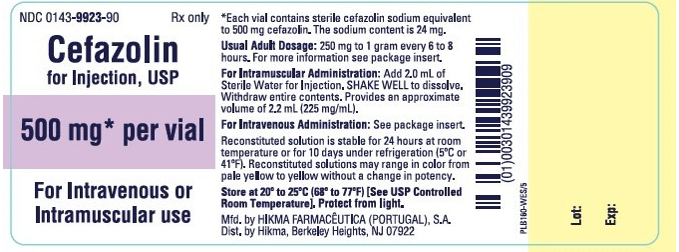The practical nurse (PN) is preparing cefazolin 400 mg IM for a client with a gram-positive infection. The available vial is labeled, "Cefazolin 1 gram," and the instructions for reconstitution state, for IM use, add 2 mL sterile water for injection. Total volume after reconstitution is 2.5 mL. After reconstitution, how many mL should be administered to the client? (Enter numeric value only. If rounding is required, round to the whole number, nearest tenths/hundredth).
The Correct Answer is ["1"]
This is the correct answer because the concentration of cefazolin after reconstitution is 1 gram/2.5 mL, which is equivalent to 400 mg/1 mL. Therefore, to administer 400 mg of cefazolin, the PN should draw up 1 mL of the reconstituted solution. This can be calculated using the formula:
Desired dose / Available dose = Volume to administer
400 mg / 1000 mg = x mL / 2.5 mL
x = (400 x 2.5) / 1000
x = 1 mL

Nursing Test Bank
Naxlex Comprehensive Predictor Exams
Related Questions
Correct Answer is B
Explanation
Choice A rationale:
Serum blood glucose (BG) level is not directly related to the presence of purulent drainage at a burn wound site. Elevated BG levels might be seen in clients with diabetes or as a stress response, but they are not the primary indicator of infection or wound complications.
Choice C rationale:
Serum albumin levels can be relevant in assessing nutritional status and the body's ability to heal wounds. However, they do not directly indicate the presence of infection or purulent drainage. Low serum albumin levels may be seen in clients with malnutrition but do not provide immediate information about the wound.
Choice D rationale:
Hematocrit measures the percentage of red blood cells in the blood and is not directly related to the presence of purulent drainage at a burn wound site. Elevated hematocrit may indicate dehydration or hemoconcentration but does not specifically address the issue of wound infection.
Correct Answer is ["B","D","E","F"]
Explanation
Choice A rationale:
Increased temperature alone is not a sufficient indication for pain medication in a post-pyloromyotomy infant. Fever can have various causes, and pain should be assessed based on other factors.
Choice B rationale:
Increased pulse rate can be an indication of pain in an infant following surgery like pyloromyotomy. It's important to assess the overall clinical picture and consider pain management if other signs are present.
Choice C rationale:
Increased respiratory rate alone is not a specific indicator of pain in a post-pyloromyotomy infant. Respiratory rate can vary for many reasons, so it should not be the sole criterion for pain management.
Choice D rationale:
Increased pulse rate is a potential sign of pain in a post-pyloromyotomy infant and should be considered when assessing the need for pain medication.
Choice E rationale:
Restlessness is often a sign of discomfort or pain in infants. Restlessness, along with other clinical indicators, can guide the decision to administer pain medication.
Choice F rationale:
Clenched fists can be a sign of discomfort or pain in infants, and it should be considered when assessing the need for pain management.
Whether you are a student looking to ace your exams or a practicing nurse seeking to enhance your expertise , our nursing education contents will empower you with the confidence and competence to make a difference in the lives of patients and become a respected leader in the healthcare field.
Visit Naxlex, invest in your future and unlock endless possibilities with our unparalleled nursing education contents today
Report Wrong Answer on the Current Question
Do you disagree with the answer? If yes, what is your expected answer? Explain.
Kindly be descriptive with the issue you are facing.
